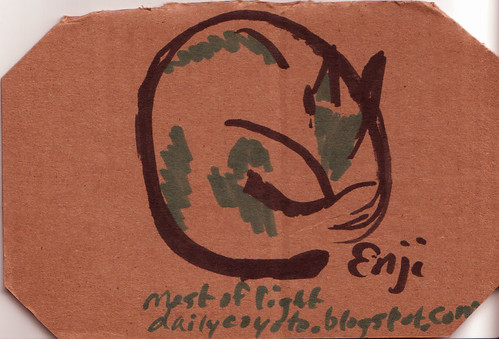Books with a Spiritual Thread

The Little Book of Atheist Spirituality by André Comte-Sponville
rating: 3 of 5 stars
I read some, skimmed some of this book. In some ways it reads like an overview of philosophy through the history of the Western Canon, as one of the prevalent themes of philosophy has been the attempt to posit the existence of God. It took me back to my college days, and reminded me of that all-consuming quest of the Liberal Arts student. Even science seeks the truth to the Root Cause of All Things.
If a reader doesn't have this literary background, it's possible the philosophical name-dropping of this book could be confusing and fatiguing, or it could ignite an interest in further study.
It has 4 sections: I. Can We Do Without Religion? II. Does God Exist? III. Can There Be an Atheist Spirituality? Conclusion: Love and Truth.
In short, to answer the first: yes. The second: all those philosophers could not prove the existence of God. Thus Pascal's Wager, and the author deals with that. The third: is answered by the conclusion.
That said, for those interested in this subject, the book is worth reading for that overview of the Western Canon on religion and God. In essence, the author is outlining how one could be an atheist, and still find a place in religion for spiritual connection.
This summary on why he does not believe in God is quite useful:
1. The weakness of the opposing arguments, the so-called proofs of God's existence.In the end, he has some intriguing thoughts and quotes on mysticism, and how it is not mutually exclusive with atheism.
2. Common experience: If God existed, he should be easier to see or sense.
3. My refusal to explain something I cannot understand by something I understand even less.
4. The enormity of evil.
5. The mediocrity of mankind.
6. Last but not least, the fact that God corresponds so perfectly to our wishes that there is every reason to think he was invented to fulfill them, at least in fantasy; this makes religion an illusion in the Freudian sense of the term.
"The prophet receives and transmits the word of God to which he adheres through faith; the mystic is sensitive to an inner light that exempts him from believing. The two are incompatible." ~French Jesuit Henri-Marie Cardinal de Lubac
"I am a mystic and believe in nothing." ~Nietzsche
The author did touch on Buddhism and Taoism at times as quite compatible with his thinking. Sometimes it was frustrating to me that he argued with Western thought when I thought Buddhist thought would have met those arguments easily.
 Enso: Zen Circles of Enlightenment by Audrey Yoshiko Seo
Enso: Zen Circles of Enlightenment by Audrey Yoshiko Seorating: 4 of 5 stars
The Buddhist name my Zen teacher gave me is Enji, which contains the same character as Enso, the word for this circle that symbolizes Zen for many, so of course I had to pick up this book. In the introduction we learn that early Indian culture is credited with the development of zero as we use it in mathematics.
Not only does the book share various historic versions of the Enso and explain this particular tradition in calligraphy, it is a window into a small section of the history of Zen itself.
The author says "Torei Enji is considered by many to be the King of enso." I think he may be my namesake, but can't be sure as I don't know the kanji. When you see these circles, you may think they're not perfect...but according to the book, they meant to do that. I don't know, there was at least one where I thought the verse was attached to joke about the unintended mistake.
Enso pictures were often accompanied with traditional verses, or verses coined by the Zen master. Torei Enji (1721-1792) often used the verse from the mythic words of the Buddha upon his birth, "In Heaven and the Earth below I alone am the Honored One."
The verse I like describes the enso and my name comes from the Third Patriarch Chien-Chih Sen Ts'an, "Precepts of the True Heart": Round and perfect like vast space, nothing lacking, nothing in excess.
Often the artists would incorporate pictures with the round circle, often making the picture dark and the circle a lighter grey. I was inspired to make a habit of drawing the enso myself. Here is one of my first efforts. I should mention I used a marker brush.

View all my reviews.




No comments:
Post a Comment